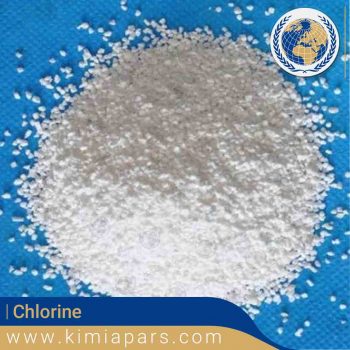Chlorine 99.99%
- Description
- Analysis of Chlorine
Description
Chlorine
Chemical Formula of chlorine: Cl
Other names: Chlorine gas | Liquefied chlorine gas
Appearance: Pale yellow – green gas
Usages: Water treatment, Sanitization, Bleaching, Chemical manufacturing
Price: Negotiable, depending on the amount of the order
Payment terms: T/T 100% cash in advance
Min order: 1*20 ft. FCL
Delivery time: Within 5-10 days after we receive the payment
Origin: Iran
Chlorine: An Overview
Chlorine is a chemical element with the symbol Cl and atomic number 17. It is a highly reactive, yellow-green gas that is highly soluble in water and is widely used in a variety of industries due to its unique properties.
Chlorine is produced by the electrolysis of salt (NaCl) in a process known as the Chloralkali process. This process splits the salt into its component parts, sodium (Na) and chlorine (Cl), which can then be separated and used for a variety of purposes.
Uses in the Industries
-
Water Treatment
Chlorine is widely used in the water treatment industry for the disinfection of drinking water and wastewater. When added to water, chlorine reacts with the water to form hypochlorous acid (HClO), which is a powerful oxidizing agent that kills bacteria, viruses, and other harmful microorganisms. This helps to ensure that the water is safe for human consumption and reduces the risk of waterborne diseases.
In addition, chlorine is also used in the water treatment industry to remove iron, manganese, and other contaminants from the water, improving its overall quality and taste.
-
Sanitization
Chlorine is used in the food and beverage industry for sanitization purposes. When added to food and beverage processing equipment, it helps to kill bacteria and other harmful microorganisms, reducing the risk of contamination and improving the safety of the food and beverage.
In addition, chlorine is also used in the healthcare industry for sanitization purposes. It is added to surfaces, equipment, and instruments to kill bacteria and other harmful microorganisms, reducing the risk of infection and improving overall hygiene.
-
Bleaching
Chlorine is used in the textile and paper industry for bleaching purposes. When added to textile fibers and paper, it helps to remove impurities, brighten colors, and improve the overall appearance and quality of the product.
In addition, chlorine is also used in the food industry for bleaching purposes. It is added to flour, sugar, and other food products to improve their appearance and reduce the risk of discoloration.
-
Chemical Manufacturing
Chlorine is an essential ingredient in the production of a variety of chemicals, including chlorinated solvents, PVC plastic, and pesticides. It is also used as a raw material in the production of a variety of consumer goods, including cosmetics, household cleaners, and personal care products.
Safety Considerations
Chlorine is a highly reactive and toxic gas that can be dangerous to human health and the environment if not handled and used properly. For this reason, it is important to handle and use chlorine with caution.
When handling chlorine, it is important to wear protective gloves, eye protection, and a gas mask to reduce the risk of skin and eye irritation and inhalation. In addition, chlorine should be stored in a cool, dry place, away from heat and moisture, to reduce the risk of decomposition and the release of dangerous levels of chlorine gas.
It is also important to avoid mixing chlorine with other chemicals, as this can generate dangerous levels of heat and pressure and increase the risk of fire or explosion. This includes mixing chlorine with acids, such as vinegar or citric acid, as this can generate chlorine gas.
Chlorine Analysis |
| Content | Test Result |
|---|---|
| CL2 | MIN 99.99% |
| Moisture | MAX 20 ppm |

